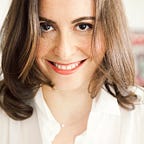The most wired city in the world
When I had the opportunity to go to Seoul, even for just five days — my boyfriend was invited to speak at a conference there — I jumped at it. A trip to the most wired city in the world, the home of Samsung and delicious barbecue — I was in.
The two fourteen-hour flights took up a good portion of the trip, and the time difference — thirteen hours ahead of New York — was disorienting. We flew on the world’s largest passenger airplane, the giant double-decker Airbus A380, which is used by only nine airlines. If it’s any indication of the experience, the flight attendants wore Gianfranco Ferre uniforms.
We stayed in Gangnam (yes, that one — hit up the nearby restaurant Mui Mui in Dosan Park for a glimpse of Gangnam’s housewives), at the Intercontinental Coex. Though the hotel’s excellent WiFi was free, we paid for it in other ways; on our first night, we made the mistake of eating at one of the hotel restaurants.
Seoul, home to 10.5 million people and bisected by the Han River, is enormous and sprawling. North of the river is “old” Korea; south is the financial district. Tremendous modern buildings, one after the other, with web addresses plastered on their facades, line the streets.
Its subway system — which also has Wifi — is considered the best in the world. Subway lines are numbered, and the map looks similar to London’s. Signs and announcements are in both Korean and English. The tracks are separated from the platform by sliding glass doors, and a recorded bugle sounds whenever a train approaches. Advertisements for the services of plastic surgeons (apparently the country is obsessed) and universities plaster the subway tunnels; those for Samsung dominate the platforms.
Samsung is everywhere. The company produces about 20 percent of the country’s GDP. Nearly every person riding the subway carried a Samsung phone or phablet. Samsung retail stores — like a Galaxy Studio or Galaxy Zone, named after its popular smartphone — dot the landscape the way that Apple stores do in the U.S. On the subway platforms, Samsung advertises the Galaxy S4 with the tagline, “Meet a life companion.”
The night before the conference, which was hosted by Spark Labs and held at the gigantic convention center attached to the hotel, we attended a dinner of Korean barbecue. A conversation with one of the mentors to the startups funded by Spark Labs yielded fascinating insight into the country’s growth and technological development. Cable and broadband internet access cost about $25 per month, cheaper than in the U.S. The area south of the river — now developed as Gangnam — used to be all orchards; the mentor grew up in one of its first developments in the 1970s. Today, Seoul is the vanguard of one of the most technologically advanced countries in the world. A recent New Yorker article (paywall) chronicled its LCD revolution, while the Wall Street Journal reported that studios were quietly testing renting movies via video on demand while they are still playing in theaters there. A week after we got back, Mark Zuckerberg traveled to Seoul to meet with South Korean president Park Geun-hye and Samsung executives.
As for their famously hostile neighbor, the mentor told us that South Koreans regard North Korea as a “drunk thug” or “terrorist uncle.” In the seventies, schools would perform bombing drills once a month; now they’re done once a year. Apparently Kim Jong-Un has had plastic surgery to look more like his forebears, and his aunt and uncle are really in charge.
We ate and walked our way through the rest of our stay, taking a particularly lovely stroll along the Cheonggyecheon, a creek and public works project in the middle of the city. At nouveau Korean restaurant Jungsik, which has a branch in New York City’s TriBeCa, we ate a five-course dinner that included a bibimbap “salad” and cigarette petits fours. We sought out a lunch of North Korean cold noodles, or naengmyeon, at a restaurant that claimed to be open since 1953, the year of the armistice. We had “brunch” at a tiny hole in the wall near a subway station with a line down the block, where we grilled our own beef — the only item on the menu — over a barrel. And we found gourmet coffee shops where the baristas were seriously competitive in the “Brooklyn” of Seoul, near its universities.
Five days in Seoul wasn’t nearly enough time, but it was enough to get a taste of a place that felt like the new New York.
